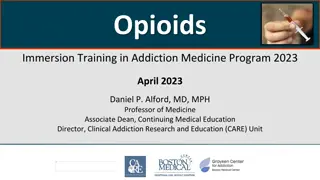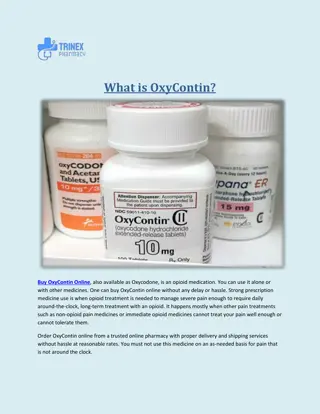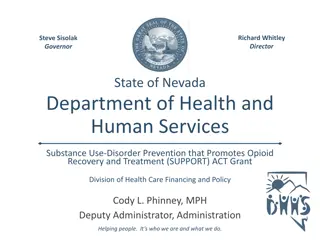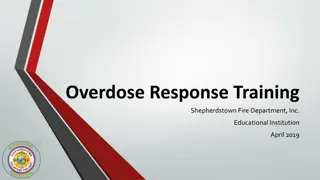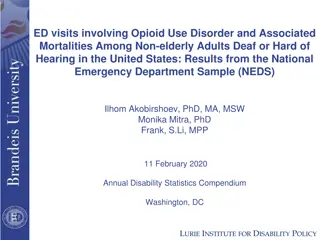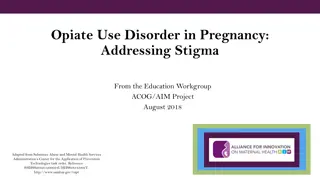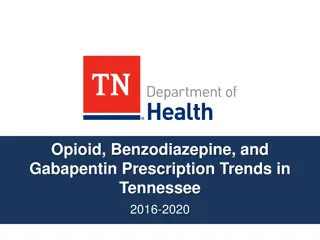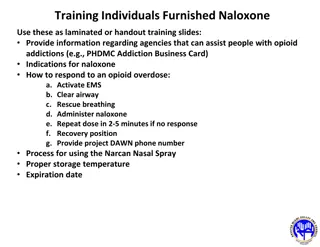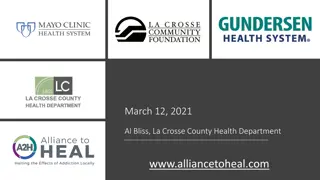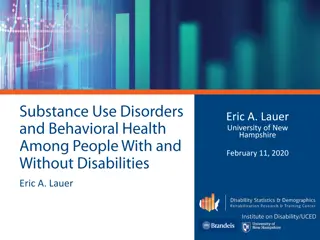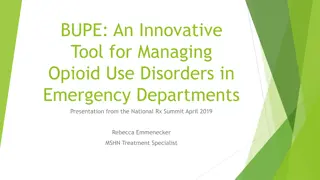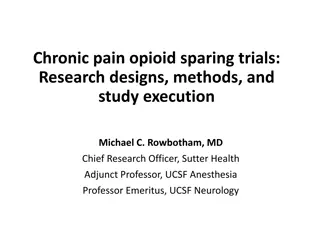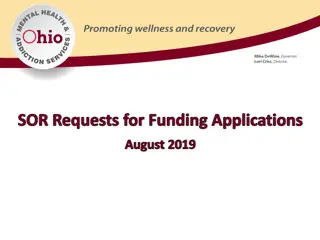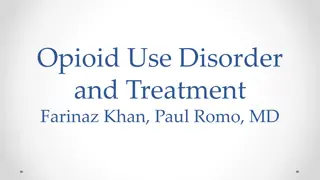Enhancing Emergency Medicine Training for Opioid Use Disorder
The research focuses on improving Emergency Medicine residency training regarding Opioid Use Disorder (OUD) treatment, particularly with Medications for Opioid Use Disorder (MOUD). It highlights the need for increased education and implementation of evidence-based practices such as naloxone and buprenorphine prescriptions upon ED discharge. The study evaluates resident attitudes and knowledge over a curriculum period to enhance MOUD initiation in ED settings.
Download Presentation

Please find below an Image/Link to download the presentation.
The content on the website is provided AS IS for your information and personal use only. It may not be sold, licensed, or shared on other websites without obtaining consent from the author. Download presentation by click this link. If you encounter any issues during the download, it is possible that the publisher has removed the file from their server.
E N D
Presentation Transcript
Authors & Affiliations Aaron Krumheuer, MD Alex M. Nickel, MD Erin Kim Carrie Bailes, MD Emily E. Ager, MD, MPH Ella Purington, MD Syed M. J. Mahmood, MD Assistant Professor, Department of Emergency Medicine, Division of Pain Medicine, UC-Davis Mitchell T. Hooyer, MD Emergency Medicine Resident, University of Michigan ML Ryan, MD Emergency Medicine Resident, St. Luke's University Health Network Jessica Baker Medical Student, University of Michigan Megan Purdy, MD Emergency Medicine Resident, Denver Health Carolyn Commissaris, MD Assistant EM Residency Program Director, Brigham & Womens Hospital/Harvard Medical School Shawna Smith, PhD Assistant Professor, School of Public Health, University of Michigan Alexander Janke, MD, MHS Fellow, National Clinician Scholars Program, University of Michigan Christopher Fung, MD, MS Assistant Professor, Department of Emergency Medicine, University of Michigan Eve D. Losman, MD, MHSA Clinical Associate Professor, Department of Emergency Medicine, University of Michigan Emergency Medicine Resident, University of Michigan PM&R Resident, Corewell Health Medical Student, University of Michigan Emergency Medicine Resident, University of Michigan Emergency Medicine Resident, University of Michigan Emergency Medicine Resident, University of Michigan Department of Emergency Medicine
Disclosures No listed authors have financial relationships to disclose. This work was supported by a SAEMF / NIDA Mentor- Facilitated Training Award. Department of Emergency Medicine
For many patients, the ED is a potential point of entry for initiating Opioid Use Disorder treatment. However, less than 10% of patients with an ED visit for non-fatal overdose are prescribed naloxone or buprenorphine at discharge. Chua KP et al. AnnEM. 2022;79(3):225-36. Department of Emergency Medicine
MOUD is the evidence based, gold standard treatment for OUD ED based MOUD initiation has been gaining momentum over the past 15 years and is now considered the standard of care. But . . . not all emergency physicians have embraced this treatment modality and residency-based training / education in MOUD is not universal. Department of Emergency Medicine
Needs Assessment Survey 4 year training program 64 residents Already exposed to the concept of risk reduction via an ED based Take Home Naloxone program Department of Emergency Medicine
The study We examined attitudes and knowledge at the beginning, midpoint, and end of our curriculum. We used descriptive statistics to examine our results with regression models to evaluate changes over time. Department of Emergency Medicine
The curriculum and # of residents in attendance at each session Department of Emergency Medicine
Results Objective knowledge transfer on a 12-question survey was not statistically significant across the study period. However, ED residents reported greater confidence with several domains of ED based care of patients with OUD. Department of Emergency Medicine
Targeted educational offerings for EM residents increased confidence and comfort with MOUD and harm reduction. A universal curriculum for EM residents with information about local resources holds promise for improving the care of patients with OUD in the ED. Department of Emergency Medicine
References Vivolo-Kantor AM, et al. Vital Signs: Trends in Emergency Department Visits For Suspected Opioid Overdoses United States, July 2016 September 2017. Morbidity and Mortality Weekly Report. 2018; 67(9): p.279. Samuels EA, Coupet E, D Onofrio G. (2021) Emergency Department Treatment of Opioid Use Disorder. In: Wakeman SE, Rich JD. (eds) Treating Opioid Use Disorder in General Medical Settings. Springer, Cham. Larochelle MR, et al. Medication for Opioid Use Disorder After Nonfatal Opioid Overdose and Association with Mortality: A Cohort Study. Annals of Internal Medicine. 2018; 169 (3): 137-145. Morgan JR, et al. Overdose Following Initiation Of Naltrexone And Buprenorphine Medication Treatment For Opioid Use Disorder In A United States Commercially Insured Cohort. Drug and Alcohol Dependence. 2019; 200: 34-39. Weiner SG, Baker O, Bernson D, Schuur JD. One-year mortality of patients after emergency department treatment for nonfatal opioid overdose. Annals of Emergency Medicine. 2020; 75(1): pp.13-17. Olfson M, et al. Causes of Death After Nonfatal Opioid Overdose. JAMA Psychiatry. 2018; 75(8): 820 827. D'Onofrio G, et al. Emergency department-initiated buprenorphine/naloxone treatment for opioid dependence: a randomized clinical trial. JAMA. 2015; 313(16): 1636- 44. Kaczorowski J, et al. Emergency Department Initiated Interventions for Patients With Opioid Use Disorder: A Systematic Review. Academic Emergency Medicine. 2020; 27(11): 1173-1182. Im DD, et al. Emergency Department Clinicians Attitudes Toward Opioid Use Disorder And Emergency Department-Initiated Buprenorphine Treatment: A Mixed-Methods Study. Western Journal of Emergency Medicine. 2020; 21(2): 261-271. Lowenstein M, et al. Barriers And Facilitators For Emergency Department Initiation Of Buprenorphine: A Physician Survey. The American Journal of Emergency Medicine. 2019; 37(9): 1787-1790. Fox, L, Nelson LS. Emergency Department Initiation of Buprenorphine for Opioid Use Disorder: Current Status, and Future Potential. CNS Drugs. 2019; 33: 1147 1154. Allen B, Nolan ML, Paone D. Underutilization of medications to treat opioid use disorder: What role does stigma play? Substance Abuse. 2019; 40(4): 459-465. Department of Emergency Medicine


